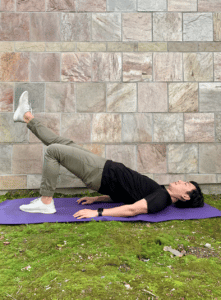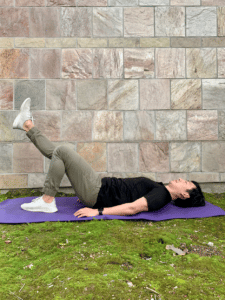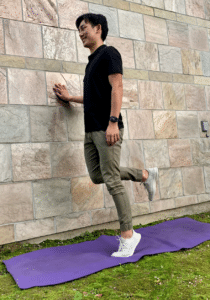
Returning to Running After a Break
It’s been a crazy winter in the bay. Atmospheric Rivers and Pineapple Express have become household terms. But now the sun is shining, the wildflowers are blooming and you are looking to return to running? Jumping right into the trails might be tempting but returning to running requires some work, especially for novice runners or for individuals coming back from an injury. To really hit the ground running, you may want to start by not running. Listen to the advice of Chris Powers, PT, PhD, FASCM, FAPTA, professor and associate chair at University of Southern California’s Division of Biokinesiology and Physical Therapy, who coined the phrase “you don't run to get fit, you get fit to run.” Here’s how to get started.
Why You Need to Be Fit to Return to Run
Returning to running is a demanding activity for the body. The average runner’s foot contacts the ground for less than 300 milliseconds each step and the runner will take about 1,400 steps per mile. In that step the runner experiences ground reaction forces up to 2-3 times their body weight. That is A LOT of force going through the body in a very short amount of time! By examining individual muscle groups, researchers have been able to break down the force on specific muscles compared to walking. Major muscle groups in the legs are required to absorb load anywhere from 1.5 to 8 times a runner’s body weight with each step! The muscles subjected to the greatest load include the calves , quadriceps and glutes.
What to Strengthen As You Return to Run
Because of the demand running puts on your body, the average runner should have a baseline fundamental strength prior to returning to a running program. Exercises should focus on the calves, quadriceps, glutes and core since these muscles sustain the most load during running. It is also important that runners choose single-limb exercises. This helps reduce compensatory patterns and improves symmetry between legs. Here are three example exercises that you can use to test your baseline strength across major muscle groups before returning to a running routine:
Static Lunge: 3 sets of 15 repetitions


Single Leg Bridge: 3 sets of 15 repetitions


Single Leg Heel Raise: 3 sets of 15 repetitions


Training Errors When Returning to Running
If baseline strength is sufficient, gradual progression when returning to running is key. Running injuries can happen from an acute injury; but most running injuries occur from repetitive overload. Most injuries also occur three to six weeks after a training error. This can be very frustrating because a runner may not realize their mistake until weeks later. Examples of training errors include increasing mileage, speed, elevation or changing surface too quickly. Tracking speed, weekly mileage, elevation gain and surface type is crucial when returning to running. Monitoring and managing load will look very different for novice versus advanced athletes. However, a good general rule is that it is best to increase baseline mileage prior to adding in speed work or hills. Starting with run-walk intervals can be a very effective way to increase time on the runner’s feet and build up to longer runs.
Recovery and Rest
Another important aspect of returning to running is allowing for proper recovery and rest. What you do when you are not running can be just as important as your workouts. Running, like weight training, will cause small microtears in your muscles. It is during periods of rest and recovery that your body repairs and rebuilds these muscles, making them stronger and more resilient. As you return to running, be sure to build in rest days, easy days and recovery activities like stretching and foam rolling. Additionally, getting enough sleep and eating a nutritious diet are essential for your body's recovery process.
Stay Motivated As You Return to Running
Returning to running after a break or injury can be challenging, but there are several things you can do to stay motivated and engaged:
- Find a running partner
- Join a local running group
- Create a playlist of upbeat music to listen to while you run
- Set specific goals short term goals and track your progress
- Apps like Strava and Garmin can be great for tracking progress
- Be kind to yourself
- Progress week to week is more important than comparing yourself to old personal records
You’ve Got This
If this seems daunting, don't let it be! Running is a great activity that improves cardiovascular fitness, muscular endurance, and overall well-being. Making sure a runner is “fit” prior to starting a running program helps reduce injuries, improve performance, and keeps the runner training longer and faster! If you are looking for further guidance, please reach out to any member of the running team here at Agile for more information. Agile Physical therapy now offers group running assessments for your local team as well as individual assessments through our RunSafe program. Begin your training program today and you’ll be ready to hit the trails in no time at all.
About The Author:
 Katie Monaghan, PT, DPT is a graduate of Columbia University’s Doctor of Physical Therapy program. She is also a graduate of Agile Physical Therapy’s Orthopedic Residency. Prior to Columbia, Katie attended Tufts University outside of Boston where she played collegiate field hockey. Originally from New Jersey, Katie loves exploring the Bay Area’s endless trails and finding unique restaurants. In her free time, she also enjoys weekly track workouts with her local running club, biking, and swimming
Katie Monaghan, PT, DPT is a graduate of Columbia University’s Doctor of Physical Therapy program. She is also a graduate of Agile Physical Therapy’s Orthopedic Residency. Prior to Columbia, Katie attended Tufts University outside of Boston where she played collegiate field hockey. Originally from New Jersey, Katie loves exploring the Bay Area’s endless trails and finding unique restaurants. In her free time, she also enjoys weekly track workouts with her local running club, biking, and swimming
